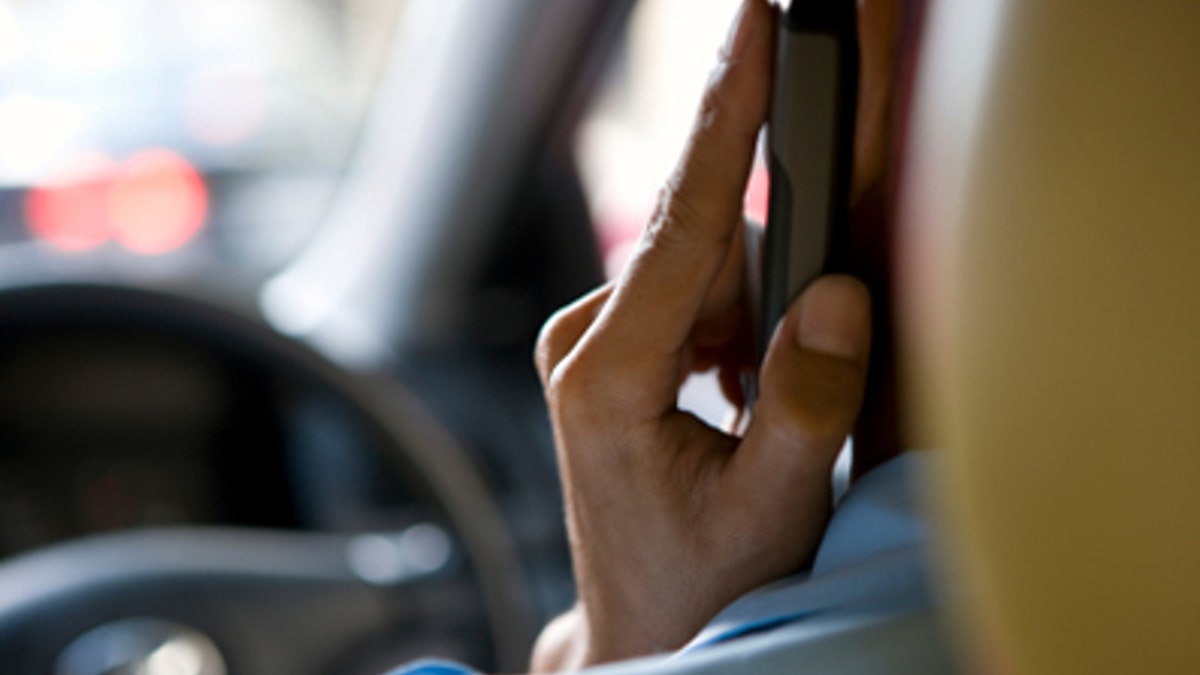
(iStock)
Driver distraction is like the weather. Everybody complains about it but no one does anything about it.
Well, now the federal government says it wants to do something about it.
The National Highway Traffic Safety Administration (NHTSA) held the first of three public hearings on the topic Monday in Washington, D.C., to get input about a set of proposed voluntary guidelines for in-car navigation and integrated technology systems. Hearings in Chicago and Los Angeles are to follow later this week.
NHTSA has suggested that built-in systems meet clarity and timing guidelines to minimize distraction while other functions, such as texting, Web browsing, and dialing, be disabled when a car is in motion.
As anyone who spends any time behind the wheel knows, driver distraction is an all-too common problem. I've dodged men who are texting as they weave between lanes, with children sitting in the back seat. I've followed women checking Facebook
posts while they cruise the Interstate at 70-mph-plus. And I've narrowly avoided being run over by teens checking their phones as they approach intersections.
Many folks aren't as lucky.
Over 3,000 people in the U.S. were killed in distraction-related accidents last year, according to NHTSA. Fortunately, there are already some laws against using a cellphone or texting behind the wheel.
Ten states ban the hand-held use of cellphones, and 35 states ban texting outright, according to the Insurance Institute for Highway Safety. And the laws seem to have a positive effect, according to a new University of California, Berkeley, study released earlier this month. Hand-held cellphones were banned in California in 2008, followed by a ban on texting in 2009. In the years since then, the report says deaths due to drivers using cellphones dropped nearly 50 percent. Either drivers are getting smarter, or they're afraid of getting a ticket.
So if it's finally dawning on people that driving and looking down at a phone is compatible with only one thing -- crashing -- what's the government worried about?
The danger on the horizon is the growing number of connected cars, automobiles that are linked to the Internet and to smartphones Many consumers want the ability to play Pandora stations in the car or to find a local restaurant. But this level of connectivity surpasses anything we've seen before, and NHTSA is worried. Will drivers get hooked on in-car apps, text messages read aloud in the car, Facebook postings, and finding friends while driving down the highway?
Automakers and so-called “telematics” companies (which make in-car technology) argue that connecting smartphones to the dashboard makes them safer to use and reduces distraction, because drivers don’t have to reach for the phone in their lap. But should anyone be giving a song a thumbs up or listening to platitudinous Tweets while negotiating rush-hour traffic?
Ford, which has been on the cutting edge of much of this with its Sync and My Ford Touch systems, has received kudos -- and criticism -- for its technology. But the company is clearly giving drivers the most options -- including touch screens and additional buttons -- in an attempt to minimize distractions. The company has also restricted some tasks, such as tapping in addresses while driving, and it has pioneered the use of voice-activated technology, notes Steve Kenner, the company’s director of automotive safety.
Ford also supports a Federal ban on the use of hand-held devices while driving.
So clearly the auto companies are concerned about distractions. Several have told me in candid, not-for-attribution conversations that they are worried about the consequences of having apps in the dash. But they are just as worried about competitors adding such features, so they feel compelled to add them too.
How to restrict such systems is unclear. The NHTSA wants limits on how many seconds a particular task can take, but how can you time tuning the radio? And while the agency plans to lay down guidelines for mobile phone and voice recognition systems as well, those proposals are years away.
The rate of technological advance is clearly exceeding the government's ability to cope and implement new rules. This was clearly demonstrated recently when a mandate to install a simple technology to save lives -- rear-view camera systems -- was delayed yet again.
Originally due to be issued in February 2011, the new rule would mandate that all vehicles meet a rear visibility standard to prevent pedestrians from being backed over. (NHTSA estimates that 17,000 people are injured in this way every year.) Transportation Secretary Ray LaHood told Congress he was delaying the rule again, until the end of the year.
In the meantime, technology marches forward. The question is, will drivers be able to keep up?
Follow John R. Quain on Twitter @jqontech or find more tech coverage at J-Q.com.
